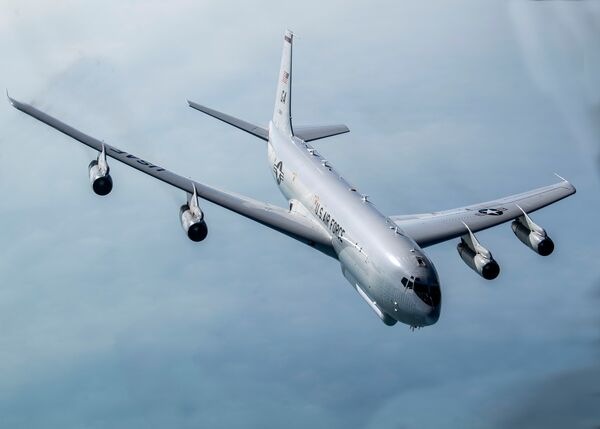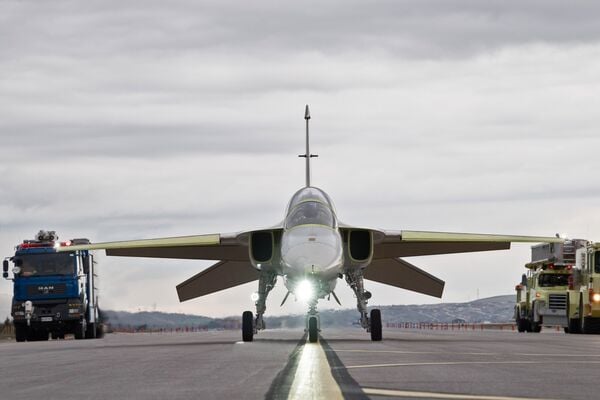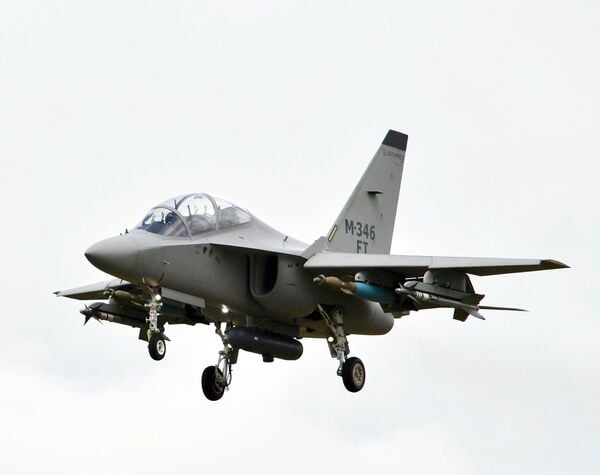- About
- Intara
- Capabilities
- Advisory
- Resources
- News
- Store
NATO loses ISR capability over Ukraine as Putin closes airspace
24 February 2022
by Gareth Jennings


NATO aircraft, such as the US Air Force's E-8 JSTARS, have been operating over Ukraine for a few weeks, providing invaluable intelligence on Russia's buildup of forces. With President Putin closing down the country's airspace on 24 February, these assets will now have to operate in alliance and international airspace instead. (US Air Force)
NATO has lost its ability to conduct airborne intelligence, surveillance, and reconnaissance (ISR) overflights of Ukraine, with the closure of the country's airspace by Russia.
Just prior to Russian President Vladimir Putin announcing his intent to send forces into Ukraine beyond the current borders of the breakaway regions of Donetsk and Luhansk, Russia issued a decree closing airspace across the northeast of the country, while military action across much of the remainder of Ukraine has had the same effect. Immediately following the launch of Russian military action in the early hours of 24 February, online flight-tracking services recorded manned and unmanned NATO ISR aircraft departing Ukraine for alliance and international airspace.
For a few weeks prior to Russia's wider invasion of Ukraine, NATO member air forces and alliance assets flew unprecedented, and almost continuous, ISR flights over Ukraine itself, building a picture of the ramp-up of Russian forces on the country's borders.
Since late 2021 alliance ISR assets operating over Ukraine have included US Air Force (USAF) Northrop Grumman E-8C Joint Surveillance Target Attack Radar Systems (JSTARs), Boeing RC-135 Rivet Joint signals intelligence (SIGINT) aircraft, and Northrop Grumman RQ-4 Global Hawk high-altitude long-endurance (HALE) unmanned aerial vehicles (UAVs); US Army Bombardier Challenger 650-based Airborne Reconnaissance and Targeting Multi-Mission Intelligence System (ARTEMIS) aircraft for electronic intelligence (ELINT) and communications intelligence (COMINT); UK Royal Air Force (RAF) Rivet Joints; and NATO RQ-4D Phoenix UAVs, among others.
The launch of renewed Russian military operations in Ukraine means that it is no longer safe for these and other unarmed ISR platforms to operate directly over the country, limiting their activity to alliance and international airspace close to Ukraine's borders. At the time of publication, a NATO Phoenix UAV, callsign FORTE12, was seen to be the last alliance aircraft to depart Ukrainian airspace to take up position over the Black Sea.
With Ukrainian airspace closed, Russia has launched its invasion of Ukraine with a series of cruise missile attacks on airfields, including on those located far from the country's eastern border area that has been the focus of tensions to date. Videos posted online showed a 3M-54 Kalibr (SS-N-27A ‘Sizzler’) cruise missile striking locations such as the Ivano-Frankivsk airport in the far west of Ukraine, just 100 km from the border with Slovakia. The intent of these strikes appears to be to ground the Ukrainian Air Force, and to establish Russian air dominance in support of its ground operations. Following these strikes it was reported that at least one Ukrainian Air Force Sukhoi Su-27 ‘Flanker' combat aircraft had flown to and landed in Romania.
In terms of the wider air campaign, the Ukrainian government reported at the time of publication that its forces had shot down five Russian aircraft and one helicopter, although Moscow denied this.
Ukraine conflict: Lithuania transfers L-39 light combat jet to Kyiv
22 April 2024
by Gareth Jennings


The disassembled L-39 light combat jet after being offloaded from a freight truck in Ukraine. (Lithuanian MoD)
Lithuania has successfully transferred an Aero Vodochody L-39ZA Albatros light strike jet to Ukraine, transporting the aircraft in the back of a freight lorry.
The Lithuanian Ministry of Defence (MoD) announced the delivery on 20 April, saying the single-engined jet had been transferred as part of a wider military aid package to Kyiv.
Once assembled and tested, the L-39ZA will join the Ukrainian Air Force, which already operates the type as a light fighter and ground attack platform. The L-39 is equipped with a centreline single 23 mm GSh-23 two-barrel gun, and can carry an assortment of bombs and rockets on four underwing hardpoints. It can also carry AIM-9 Sidewinder air-to-air missiles on its outboard weapons pylons.
Turkish Air Force places first orders for Hürjet Block 1 jet trainer and Gökbey helicopter
22 April 2024
by Cem Devrim Yaylali


Türkiye has placed four new contracts for domestically developed aircraft, including the first for the Hürjet Block 1 jet trainer (pictured here) and for the T625 Gökbey helicopter. (Turkish Aerospace)
Türkiye has placed its first contracts for the domestically developed Hürjet jet trainer aircraft and Gökbey helicopter.
A signature ceremony for these and two other manned aerial platforms was held with participants from Turkish Aerospace (TA), the Defence Industry Agency of Türkiye (SSB), the Ministry of Defence (MoD), and the Ministry the Interior on 18 April.
The contract for the procurement of 12 additional Hürjet advanced jet trainer aircraft will see these new Block 1 aircraft supplement four Block 0 planes ordered in December 2022. The Hürjet will replace the Northrop T-38 Talon jet trainer in Turkish Air Force (TuAF) service, and the Northrop NF-5 Freedom Fighter used by TuAF demonstration team Türk Yıldızları.
For the Gökbey, 20 of the T625 helicopters were ordered. Of these, seven are for Land Forces Command, four are for the TuAF, three are for the Gendarmarie, three are for the coastguard, and three are for the Turkish police service.
Leonardo confirms M-346 contract for Nigeria
22 April 2024
by Gareth Jennings


Nigeria is to receive 24 M-346 aircraft that will be used in both the trainer and combat roles. While Leonardo offers both the M-346FA and M-346FT (pictured) combat versions of the aircraft, all official announcements on the Nigerian deal by the NAF and/or Leonardo to date have referred only to the baseline M-346 advanced jet trainer that comes with a secondary combat capability. (Janes/Patrick Allen)
Leonardo has for the first time disclosed that it has been contracted to deliver its M-346 to Nigeria, telling Janes on 19 April that it recently confirmed its commitment to a timely delivery of the “fighter aircraft” to the West African country.
The Italian company's confirmation came in response to a post on the Nigerian Air Force's (NAF's) official Facebook account, in which it said it is to receive 24 M-346 fighter aircraft, with the first six expected to arrive before the end of 2024 and the remainder to follow in further tranches of six.
NATO has lost its ability to conduct airborne intelligence, surveillance, and reconnaissance (ISR) o...
Latest Podcasts
Iran Israel analysis
In this podcast Janes analysts discuss the Iranian attacks on Israel on the 14 April. They highlight the military systems used by Iran and the performance and impact of these on Israel. They also discuss the implications of this attack goi...
Listen nowJanes Case Studies
Using Janes Intara to build a common intelligence picture: Russian build up on the Ukrainian border
View Case StudyNews Categories
 Air Details
Air Details